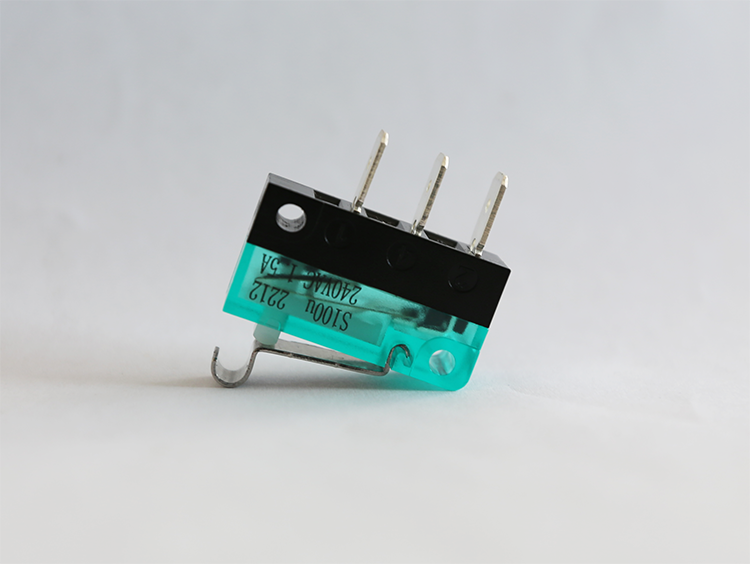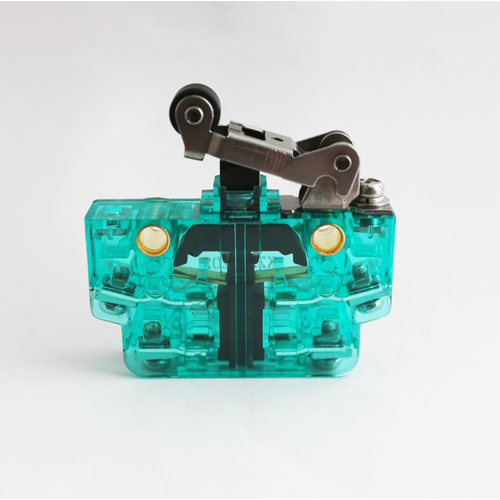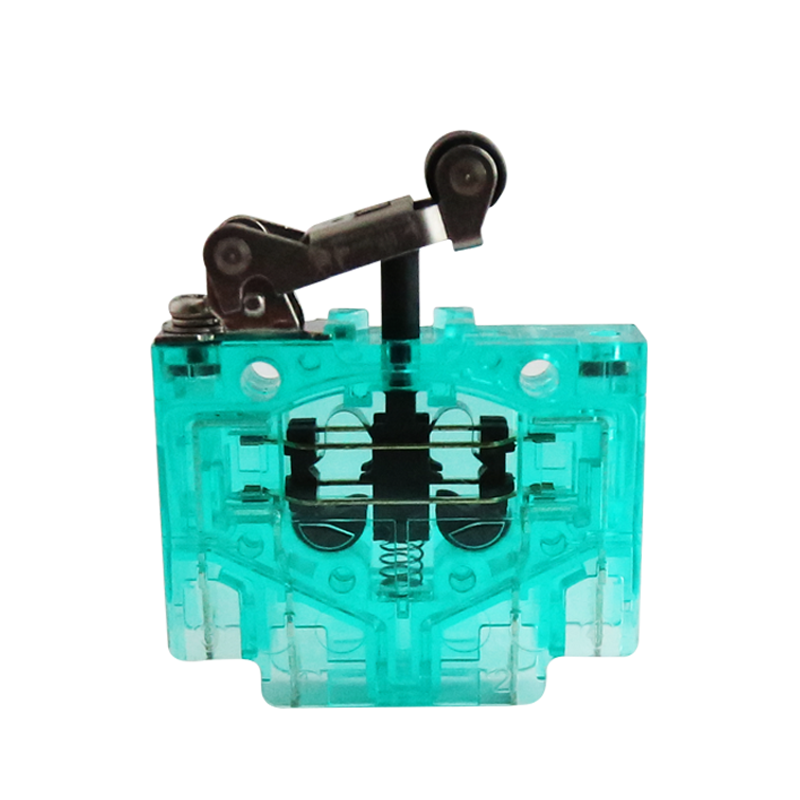

What are the installation methods for microswitches?
Release time:2024-08-19
Micro switches can be installed in a variety of ways, including determining the mounting position, installing the mount, connecting the circuit, connecting the guide wires, taking protective measures, and carrying out debugging. The following describes in detail the various installation methods for microswitches and the precautions to be taken:
1. Determine the mounting position
Requirements analysis: Before installation, the function of the microswitch in the equipment needs to be clarified in order to select the appropriate location. For example, if it is used to limit the limit position of mechanical movement, it needs to be installed in the trajectory of the moving parts; if it is used for safety detection, it should be installed in the vicinity of the potentially hazardous area for quick response.
Target identification: Identify the specific target to be operated or detected by the microswitch to ensure that it can accurately sense the target after installation and avoid sensing failures due to excessive distance or improper angle.
2. Mounting fixture
Note on material selection: When choosing the material for the mount, consider the environmental factors, such as corrosion, humidity, etc., and use stainless steel or plastic and other materials to prevent corrosion and ensure long-term stable use.
Installation: According to the site conditions, the mount can be installed in a predetermined position by screwing, welding or gluing to ensure that the microswitch is stable and correctly aligned with the target.

3. Connecting the circuit
Circuit design: Before connecting the circuit, read the specification of the microswitch in detail to understand its voltage, current level and wiring method, and design a reasonable circuit according to the usage.
Insulation: To prevent leakage and short-circuit, the connecting wires should be insulated with standardized insulating materials and make sure that all connections are in good and firm contact.
4. Connecting guide wires
Selection of lead wires: Choose appropriate length and weather-resistant wires as lead wires, the length should not be too long to avoid signal attenuation, and also consider the environmental factors, choose acid and alkali resistant, wear-resistant materials.
Reliability of wiring: The connection between the guide wire and the microswitch should be firm and reliable, and welding or special connectors can be used to ensure that the wire will not be dislodged due to vibration or other reasons during the operation of the machine.

5. Protective measures
Waterproof and dustproof: If the microswitch is used in a dusty and humid environment, corresponding protective measures should be added, such as installing a protective cover or using sealed microswitches, to protect the internal structure from contamination.
Vibration-proof measures: If the microswitch is used in a vibration-prone environment, shock-absorbing measures should be taken, such as installing shock-absorbing pads between the mounting base and the switch, to avoid damage caused by vibration.
6. Perform commissioning
Pre-commissioning: After the initial installation is completed, carry out static testing to check whether the micro switch can respond normally and confirm that there is no error before entering dynamic testing.
Comprehensive performance test: Under the operating condition of the equipment, the response speed, accuracy and stability of the microswitch are comprehensively tested to ensure that it can work normally under various conditions.

In addition, the following points should be noted during the installation process:
Operate with power off to ensure that the installation is carried out in a power-off state to avoid electric shock accidents.
Use the correct tools, such as torque wrenches, to ensure proper tightening of bolts and other fasteners to avoid damage to the microswitch.
Avoid using substances such as fixing agents on the movable parts or inside the microswitch that may affect its operation.
In general, the installation process of microswitch requires strict and meticulous, from determining the installation position to debugging, each step involves the performance play and service life of microswitch. Reasonable planning of the installation process, selection of suitable installation materials and methods, coupled with rigorous testing and debugging, can ensure the stability and reliability of the microswitch in practical applications. For users, understanding the working principle and installation points of microswitches can help to improve the operational efficiency and safety of the equipment.
1. Determine the mounting position
Requirements analysis: Before installation, the function of the microswitch in the equipment needs to be clarified in order to select the appropriate location. For example, if it is used to limit the limit position of mechanical movement, it needs to be installed in the trajectory of the moving parts; if it is used for safety detection, it should be installed in the vicinity of the potentially hazardous area for quick response.
Target identification: Identify the specific target to be operated or detected by the microswitch to ensure that it can accurately sense the target after installation and avoid sensing failures due to excessive distance or improper angle.
2. Mounting fixture
Note on material selection: When choosing the material for the mount, consider the environmental factors, such as corrosion, humidity, etc., and use stainless steel or plastic and other materials to prevent corrosion and ensure long-term stable use.
Installation: According to the site conditions, the mount can be installed in a predetermined position by screwing, welding or gluing to ensure that the microswitch is stable and correctly aligned with the target.

3. Connecting the circuit
Circuit design: Before connecting the circuit, read the specification of the microswitch in detail to understand its voltage, current level and wiring method, and design a reasonable circuit according to the usage.
Insulation: To prevent leakage and short-circuit, the connecting wires should be insulated with standardized insulating materials and make sure that all connections are in good and firm contact.
4. Connecting guide wires
Selection of lead wires: Choose appropriate length and weather-resistant wires as lead wires, the length should not be too long to avoid signal attenuation, and also consider the environmental factors, choose acid and alkali resistant, wear-resistant materials.
Reliability of wiring: The connection between the guide wire and the microswitch should be firm and reliable, and welding or special connectors can be used to ensure that the wire will not be dislodged due to vibration or other reasons during the operation of the machine.

5. Protective measures
Waterproof and dustproof: If the microswitch is used in a dusty and humid environment, corresponding protective measures should be added, such as installing a protective cover or using sealed microswitches, to protect the internal structure from contamination.
Vibration-proof measures: If the microswitch is used in a vibration-prone environment, shock-absorbing measures should be taken, such as installing shock-absorbing pads between the mounting base and the switch, to avoid damage caused by vibration.
6. Perform commissioning
Pre-commissioning: After the initial installation is completed, carry out static testing to check whether the micro switch can respond normally and confirm that there is no error before entering dynamic testing.
Comprehensive performance test: Under the operating condition of the equipment, the response speed, accuracy and stability of the microswitch are comprehensively tested to ensure that it can work normally under various conditions.

In addition, the following points should be noted during the installation process:
Operate with power off to ensure that the installation is carried out in a power-off state to avoid electric shock accidents.
Use the correct tools, such as torque wrenches, to ensure proper tightening of bolts and other fasteners to avoid damage to the microswitch.
Avoid using substances such as fixing agents on the movable parts or inside the microswitch that may affect its operation.
In general, the installation process of microswitch requires strict and meticulous, from determining the installation position to debugging, each step involves the performance play and service life of microswitch. Reasonable planning of the installation process, selection of suitable installation materials and methods, coupled with rigorous testing and debugging, can ensure the stability and reliability of the microswitch in practical applications. For users, understanding the working principle and installation points of microswitches can help to improve the operational efficiency and safety of the equipment.
